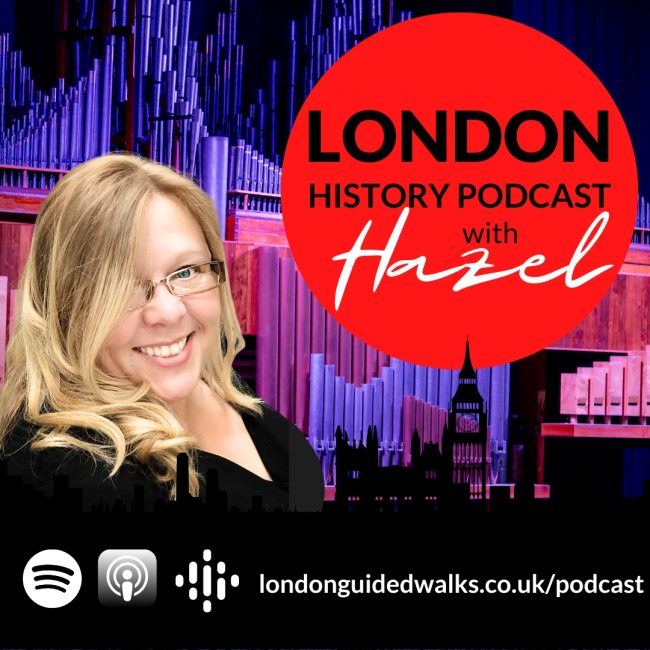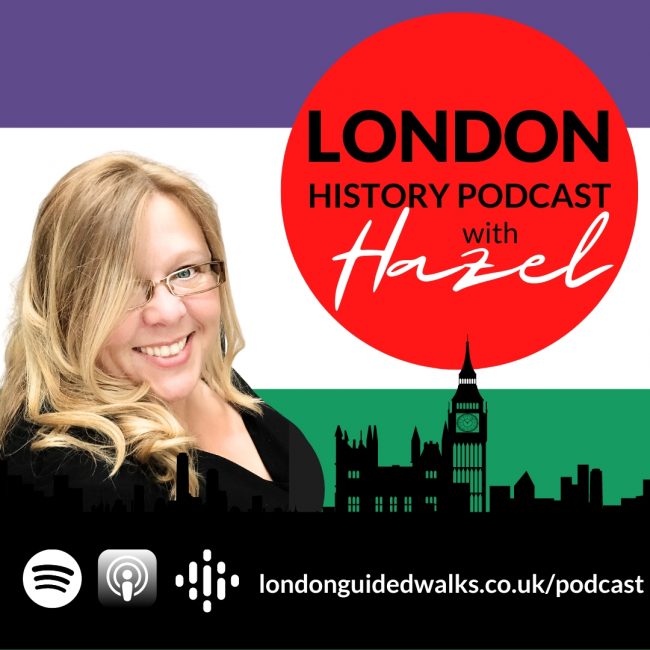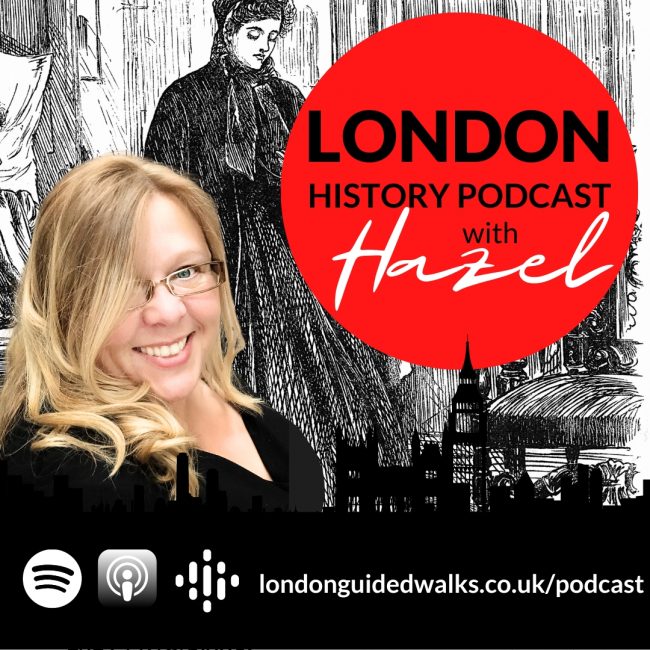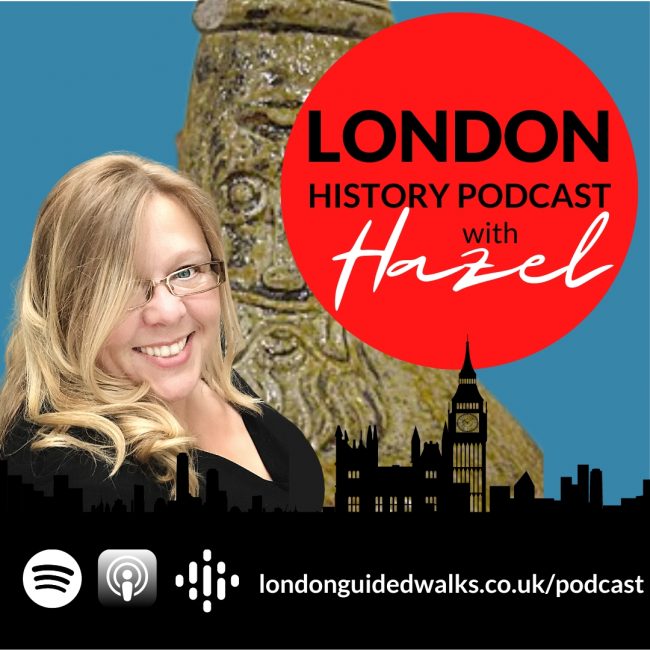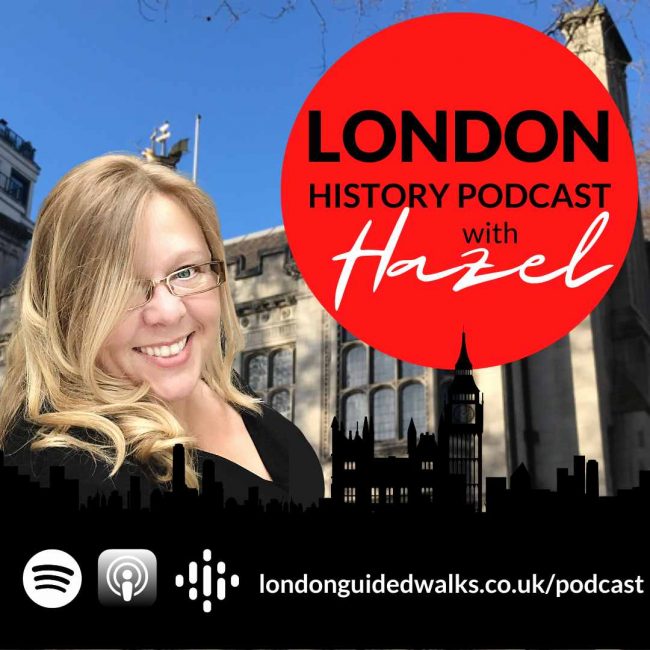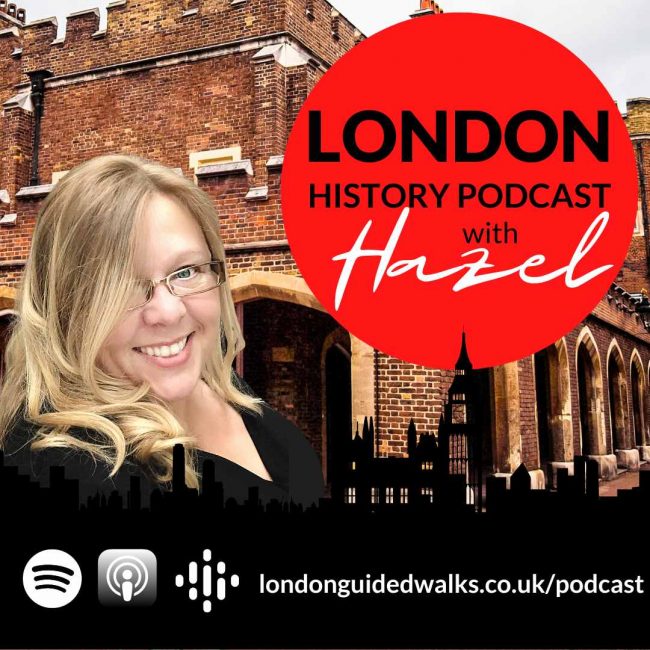 Hazel Baker is an active Londoner, a keen theatre-goer and qualified CIGA London tour guide.
Hazel Baker is an active Londoner, a keen theatre-goer and qualified CIGA London tour guide.
She has won awards for tour guiding and is proud to be involved with some great organisations. She is a freeman of the Worshipful Company of Marketors and am an honorary member of The Leaders Council.
Channel 5’s Walking Wartime Britain(Episode 3) and Yesterday Channel’s The Architecture the Railways Built (Series 3, Episode 7). Het Rampjaar 1672, Afl. 2: Vijand Engeland and Arte.fr Invitation au Voyage, À Chelsea, une femme qui trompe énormément.
Leadenhall Market Today
Today I will be talking about the history of Leadenhall Market. Leadenhall Market is a beautiful Victorian-covered market located in the heart of the City of London and has played a significant role in London’s commercial and social life for centuries, serving as a hub for trading and commerce. Known for its stunning Victorian architecture, a testament to the City’s rich architectural heritage. The ornate wrought iron and glass structure of the market’s roof is particularly notable. It has become an iconic symbol of London which has helped it become a popular tourist destination and filming location, appearing in numerous movies and TV shows. Today, it continues to operate as a place for food and drink with a little shopping.
Where is Leadenhall Market?
It’s located in the Financial District of London, between Gracechurch (or once Gracious) Street, Fenchurch Street, and Cullum Street. It is situated on the site of Cornhill and at the heart of the former Roman town once known as Londinium. In Roman times, the market served as both a trading hub and a civic centre, with the eastern section of the Roman forum and basilica situated in the same area. After the Anglo-Saxons abandoned the Roman town, the area was left desolate, but it began to be inhabited once again when they returned around 866AD.
Early History of Leadenhall Market
The market at Leadenhall can trace its roots back to the 14th century when it began as a collection of courts situated behind the grand Nevill House mansion, making it one of the oldest markets in the city. The mansion, which had belonged to Hugh de Neville, was located in the heart of London. He served as Chief Forester to Richard I, John, and Henry III and was a member of Richard’s royal household. Meat and fish have been noted as sold on the site from as early as 1321. Given its proximity to the Thames and the city’s population, it was a prime location for commerce. As the market grew, it attracted more vendors, and by 1397, cheesemongers had also set up shop there.
Leadenhall Market in 18th Century
John Noorthouck, in 1773, described the south side of Leadenhall Street as the front of the quadrangle known as Leadenhall, the largest market in the City of London. The earliest mention of this location was made by Stow, who recorded that in 1309, the manor of Leadenhall was owned by Sir Hugh Neville’s widow, who later sold it to someone else. After passing through various owners, it eventually ended up in Richard Whittington’s and other citizens’ hands in 1408. Whittington’s reputation for savvy business dealings and civic-mindedness made him the ideal person to take charge of the market. He quickly set about expanding and improving it, and it became one of the most important trading centres in London.
Dick Whittington and Leadenhall Market
In 1411, Whittington gifted the manor and the market to the City, with the Corporation of London taking over responsibility for its management. The parson and parish of St. Dunstan in the East learned that Simon Eyre, a wealthy citizen, intended to build a granary for the citizens of London at Leadenhall. As a result, they granted the city some adjacent land in Grass Street, (now Gracechurch Street), to expand the market. The granary was constructed of square stone, including a chapel at the east end.
The Corporation oversaw significant developments in the market in the following centuries, including the construction of new buildings and the establishment of rules and regulations to govern trade.
Poultry and game were particularly popular items for sale in Leadenhall Market due to the surrounding countryside, known for its abundance of game birds such as pheasants and partridges. The market quickly became a popular destination for locals looking to purchase fresh meat and other food items such as cheese, butter, and vegetables. In the 14th century, the market was granted a charter by King Richard II, which gave it official recognition and helped to establish its status as a hub for commerce and trade.
At the time, the area around Leadenhall Street was a bustling centre of trade and commerce, with many merchants and traders selling goods. As the market grew in popularity, it became a hub for social gatherings and community events. The market’s central location in the city made it an ideal meeting place for people from all walks of life, from merchants and traders to ordinary citizens.
In 1463, King Edward IV issued a charter that fixed the beam for Leadenhall’s tonnage and wool weighing. Three years later, a fraternity consisting of 60 priests and other brethren and sisters was established in the chapel associated with Leadenhall. Their purpose was to provide services to the people on every market day. Unfortunately, a significant portion of Leadenhall was destroyed in a fire in 1484.
Around 1534, the Court of Common Council held several meetings to discuss converting Leadenhall into a burse or exchange for merchants to gather, as they did at that time in Lombard Street. However, the plan was abandoned due to some unknown obstructions.
Tudor Turkeys
During the 1550s, turkeys from the New World were introduced to England via Spain and were bred in large numbers in East Anglia. As Christmas approached, these exotic birds were transported to the markets in London, where they were in high demand. The turkeys were often allowed to roost in trees at night during their journey to the city, but as they drew closer, the roads became increasingly muddy and difficult to navigate. To ensure their safe arrival, the birds were transferred from foot transport to wheeled vehicles and taken to the poultry area of the city, particularly Leadenhall Market.
As the market grew in popularity, more merchants and traders began setting up stalls in the area, offering customers a wider range of products. In the 15th and 16th centuries, the market expanded beyond selling poultry and game, with merchants selling cheese, butter, and other dairy products. These products were often sourced from the surrounding countryside, known for its fertile farmland and abundant dairy herds.
At Christmas for example, thousands of geese, the Chosen bird of the poor at Christmas, were driven from East Anglia from August onwards so they could feed on the harvest stubbles as they travelled to London in time for Michaelmas in September. The little feet were used to the roads, and so to protect them for the long journey, their feet were driven first through tar and then sawdust and grit.
First Newspaper Mention
The first mention of Leadenhall market in the newspapers was in 1722 when a Poulterer named John Spry and a Victualler named James Mills at the Fountain in Stocks-Market were condemned at the assizes in Winchester for highway robbery. Both were executed on Saturday, 10 March 1722.
Community Spirit
There seemed to have been a sense of community between the workers at the market. In 1729 one report tells of a Higler (In English law. A hawker or peddler. A person who carries from door to door, and sells by retail, small articles of provisions, and the like.) who travelled directly to Leadenhall with some horses loaded up with marketable goods. Whilst it was dark, some sharpers (swindlers) took the opportunity to cut the fasteners of the panniers and carried both of the panniers off containing two dozen geese, three dozen fowls and 3 dozen butter and several dozen pigeons. The poor man was beside himself. A collection was made among the market people to make up for his loss.
In 1732 at about five o’clock on a December morning, when it would have still been dark, a Higgler (pedlar) travelling from Stratford to Leadenhall market was robbed at gunpoint near the Whalebone (presumably a pub) by two foot-pads who stole 12 shillings, a pig and six fowls. In one account, the higgler struck the pistol out of the robber’s hand with his whip and jumped from his horse and seized him but his horse, loaded with goods ‘of a considerable value,’ ran away, and the higgler let go of the scoundrel and ran after his horse. The higgler’s description matched that of the murderer of a pipe maker in the same area the week previous.
Bacon was his downfall
Mail robber Smith was apprehended in 1742 because he bought some bacon. Allow me to explain: Smith had stolen money from a mail carrier. He used a £20 note to purchase a bacon flitch (half a pig cut sideways). He ordered the bacon and the change to be sent to the Catherine Wheel Inn in Bishopsgate Street. The £20 note was sent to the bank, where it was stopped. The person who sold the bacon, a constable and his servant went to the Catherine Wheel Inn. They were informed that soon after the bacon was delivered, it was taken away by a gentleman who ordered the porter to carry it to the Bull in Whitechapel. The three men were making their way to the Bull when they came across him in the street. He was taken to the directors of the bank before then being committed to Newgate prison.
Public Entertainment (of sorts)
The market must have been filled with real characters. I read one account of a wholesale butcher who had purchased a calf through ‘unfair means’, bypassing another butcher who also wanted to buy it. This led to a heated argument between the two men, during which they hurled insults and accusations of dishonesty at each other for three hours. The spectacle was so entertaining that it drew the attention of the entire market, and hundreds of bystanders gathered around to watch. As a result, all business was suspended for the duration of the entertaining quarrel. “It is a pity’ writes the reporter, “the police officers did not form a part of the audience, as much information might have been obtained essentially useful to the public.”
I found a story in the newspaper about a chap called Newbolt who slaughtered poultry at the Leadenhall market. He had bet 10 guineas that he would walk 100 miles in 27 hours. The upper quarter of Moorfields was measured, and Newbolt walked the route 251 times around the four corner trees. Thousands of people had come to see Newbolt attempt this feat, including the man who had walked 100 miles in 28 and a half hours in September of the previous year (1729). Newbolt’s final round, round 252, was 6 minutes over his 27-hour time limit.
Women’s Safety is no new topic. In 1731, a butcher’s son is reported to have forced himself onto a servant maid who grabbed a cleaver and cut him across the leg that it was thought it may need to be amputated.
Apprentices get their comeuppance
Another account occurred on a Sunday night in 1734 at about 9 pm. Eight or nine young male apprentices from the Leadenhall Market area were returning from Stratford. They met a young woman by Whitechapel Mount. She was a servant to Mr Watmord, a packthread spinner by Whitechapel prison. They offered to kiss her with some other indecencies. She cried out the murder, upon which a ship’s captain came out of a house to the Maid’s assistance. Blows and words were exchanged. The captain ran inside for his sword and, following them for about 100 yards, stabbed one of them, an apprentice to a porter in Leadenhall Market, under the left pap from which wound he died in about 10 minutes. The captain stabbed another apprentice in the thigh and ran a third through the arm. They were expected to recover. The two injured were taken before the Justice of the Peace, where they were charged with ‘riot and assault’ at Hicks Hill, Clerkenwell. No justice was sought for the apprentice who died. The captain was not stopped and then it’s presumed he went into hiding as a warrant went out for his arrest. The deceased was taken to the Red Lyon alehouse over against the Mount for the coroner’s jury to sit upon him.
It wasn’t just the men who created trouble, oh no.
In 1736, three wives of three butchers in Leadenhall market were convicted on oath before Sir Richard Brocas, ‘for wearing printed Callico gowns’. Following the restoration of the monarchy in the 1660s, the English East India Company introduced Britain to cheap calico and chintz cloth. Initially imported as a novelty side line from the East India Company’s spice trading posts in Asia, the colourful and affordable cloth quickly gained popularity, eventually surpassing the EIC’s spice trade by value in the late 17th century. The East India Company recognised the growing demand for calico and other fabrics and expanded its factories in Asia, producing and importing cloth in bulk. This move created fierce competition for domestic woollen and linen textile producers.
The impact on weavers, spinners, dyers, shepherds, and farmers was significant, and many voiced their objections. Parliament was petitioned, angry mobs stormed EIC offices, and even the fashion-conscious was assaulted for wearing imported cloth. The calico question became one of the major issues of national politics between the 1680s and the 1730s. Despite the opposition, the EIC continued to expand its production and import of cloth, ultimately changing the British textile industry forever. Parliament passed a stricter law in 1721, prohibiting the sale of almost all types of imported and domestic cotton. However, certain types, such as thread, fustian, and raw cotton, were exempted from this ban.
When reading accounts of events that took place at Leadenhall market, I came across a couple of lines about Mrs Sarah Earle. She was a maiden gentlewoman, ‘possessed of an early fortune’, and resident of Leadenhall market. In 1747 she died at the grand old age of 90 of smallpox.
Although there is no further mention of Mrs Sarah Earle, there is a story of a most extraordinary funeral which happened at Leadenhall market of someone known amongst the poulterers and purveyors there by the cognomen of “Old Tom.”
To quote a reporter from the West Kent Guardian: [for years ‘he was seen running about, winter and summer, without hat, shoes, or stockings, and wearing the same coat. He was a native of France, lived a useful life, and was much respected by all who knew him. But to avoid mistakes, gentle reader, though a biped, the deceased was only a goose. By his old tricks and sagacity procured for himself host of friends, and did much to rescue his order from the stigma of stupidity which has been almost universally cast upon it.’
‘Old Tom of credit renown’ hatched at Ostend, and, having shown extraordinary character at an early age, was trained by M. Blaney, his owner, to do a number of tricks at the fairs. He also acted as a decoy goose and led his more simple brethren to the wharf whence they were shipped for the London Market. By some mistake, he was one day shipped off himself, and consigned, with eth rest of the flock, to the care of Mr. Grover, of Leadenhall Market. Tom’s extraordinary character became known, and his tricks and comicalities made him a general favourite. He would answer to his name in the goosish dialect and by a brisk clapping of his wings and follow his friends like a pet dog. On his original master coming to London, some time afterwards, Tom recognised him, and Mr. Blaney was so much delighted to see his old servant, that he offered if Mr. Grover would keep him, to pay all his expenses. Tom the Gander then became the patriarch and guardian of all the geese and goslings that came to the market, and he was never known to let any go astray; was a favourite with all, and the pet of many.
He frequently visited the nearby gin palaces and consumed multiple drams of Mountain Dew throughout the day. Unfortunately, the alcohol occasionally adversely affected him, and he would become what the police call “drunk and disorderly.” Every day, at a specific time, Tom would stroll with great dignity into the Rose and Crown establishment, where the hostess would always have a delightful treat waiting for him.
This way of life injured Tom’s health, and at length, he was found dead in his nest, having lived thirty-seven years.
After his body had been properly embalmed and put into a simple coffin, it was laid out on his master’s stall and remained there for several days. Two beloved geese, dressed in mourning crape, stood at the door and acted as mutes, paying their respects to their fallen friend. Sic transit gloris mundi. (‘Thus passes the glory of the world’).
Due to Tom’s overwhelming love and admiration from his many friends and fans, it was decided that he should be given a grand send-off. His name and age were inscribed on his coffin, and he was interred with great respect in the middle of the poultry market. A tablet was later placed over his grave, commemorating his illustrious life and achievements:-
The Grave of Poor Old Tom
In Memory of Old Tom the Gander.
Obit. 19th March, 1835, aetat. 37 years, 9 months, and 6 days.
This famous gander, while in stubble,
Feb freely without care or trouble:
Grew fat with corn and sitting still,
And scarce could cross the barn-door sill;
And seldom waddled forth to cool
His belly in the neighbourhood pool.
Transplante to another scene,
He stalked in state o’er Calais green,
With full fivehundred geese behind,
To his superior care consigned.
When readily he would engage
To lead in march ten miles a stage.
Thus a decoy he lived and died,
The chief of geese, the poulterer’s pride.
Old Tom is still remembered in a bar of that name and, at the moment. Some lovely new stained glass windows tell his story in the market.
The Leadenhall market has unique history, architecture, and atmosphere making it a must-see destination for visitors exploring the city. It won’t surprise you to learn that different facets of the Leadenhall market’s history are covered in our walking tours, including our brand new Women in the City tour, our Fantastic Beasts and Amazing Animals tour and our ever-popular Christmas Carol tour. All tours are bookable online. That’s all for now. Until next time!

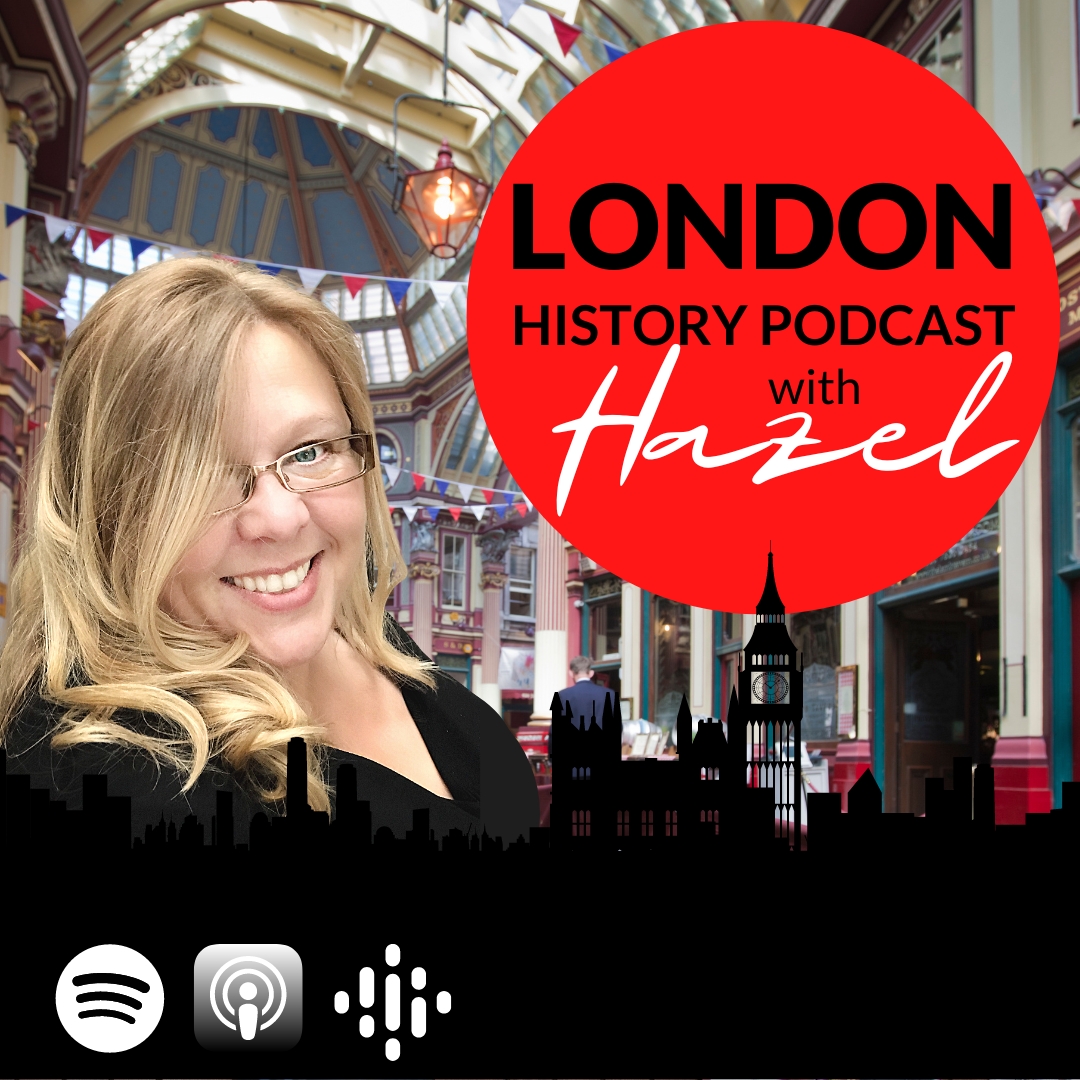
 Hazel Baker is an active Londoner, a keen theatre-goer and qualified
Hazel Baker is an active Londoner, a keen theatre-goer and qualified 